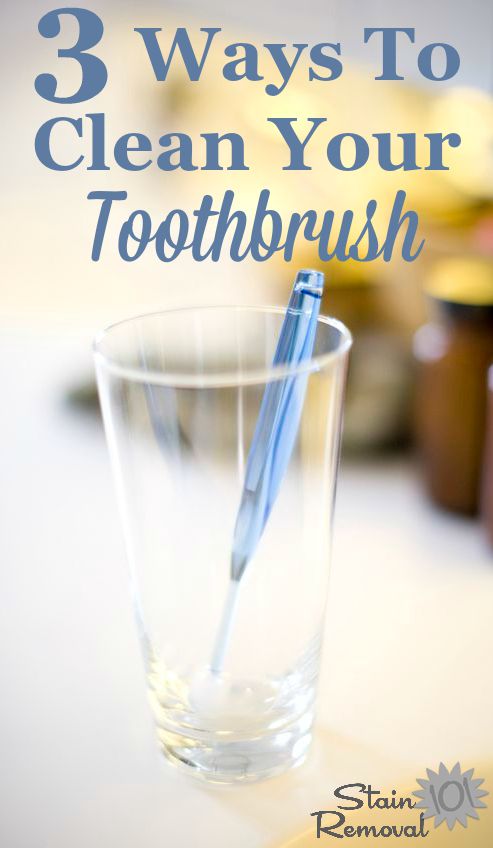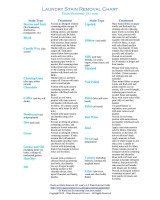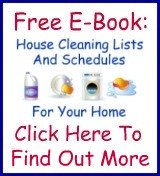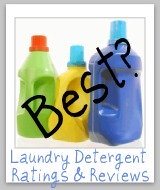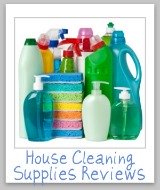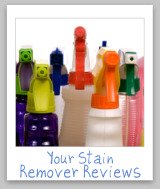How To Clean Toothbrush: Multiple Methods

Below I've collected quite a few tips for how to clean a toothbrush because -- think about it -- you're supposed to put this thing in your mouth twice daily to clean your teeth, but what is to say it's really clean itself?
First, before I discuss the methods for toothbrush cleaning though, you should know some general rules about when you should replace, not just clean, your brushes.
Even With Cleaning You Still Need To Replace Toothbrushes Periodically
1. You need to replace your toothbrush, at a minimum, every three months according to the American Dental Association. Sooner if the bristles begin to fray, because then they aren't actually able to clean your teeth as well.While that is the general rule, feel free to replace your toothbrush more frequently if you feel it is necessary.
2. You may also want to consider replacing your toothbrush sooner if you've gotten a viral or bacterial infection, if you're feeling especially paranoid. While the methods below can help clean any germs from them, none of these methods are proven to sanitize them fully, so it may be worth the minimal expense to just start fresh after an illness.
(Check out these 9 things to clean and sanitize in your home when someone been sick).
3. Kids toothbrushes may need to be changed even more frequently, especially if they have a tendency to chew on them or wear out the bristles more quickly.
Habits To Implement Daily When Using Your Toothbrushes
Along with a weekly, or every couple week cleaning, you should do the following to keep your brushes as clean as possible:1. Rinse your toothbrush completely, using running water, after brushing. Make sure to rinse away all toothpaste and other debris, so it doesn't sit there and get yucky.
2. Store them in a place where they can thoroughly dry between uses. Wet brushes, such as those held in closed containers or covered, stay damp, which is a known breeding ground for bacteria.
Between replacements though regular cleaning can keep your brush fresh and ready for use. I suggest cleaning your brushes weekly, or every couple weeks.
Also, while this article focuses on the brushes themselves don't forget to occasionally clean your toothbrush holder as well. Putting a clean brush in a dirty holder won't keep it that way for long, so hand wash or throw the holder in the dishwasher periodically to keep it sanitary as well.
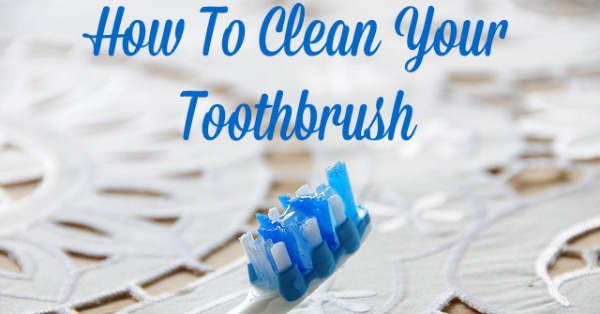
Top photo courtesy of Jess Pac
Toothbrush Cleaning Tip: Use Hydrogen Peroxide

SR101 Reader says:
I use hydrogen peroxide weekly to clean my toothbrush.No need to throw them into the landfill.
Just soak the head in a small cup of peroxide after brushing your teeth at night, and rinse off in the morning. Simple!
Taylor says:
Thanks for this quick tip!There are, of course, lots of uses for hydrogen peroxide around your home. You can click the link to see even more, or to share your own.
The reason this natural cleaning product works so well for cleaning this personal care product is that it can help sanitize the brush at the same time it removes odor causing bacteria.
Along with doing this weekly you may want to soak your brush in the peroxide anytime you or a family member has been sick, so they don't get sick by putting the germs right back in their mouth.
Hydrogen Peroxide {Referral Links}
Photo courtesy of Anderson Mancini
Soak Toothbrush Head In Mouthwash To Help Reduce Bacteria On Bristles
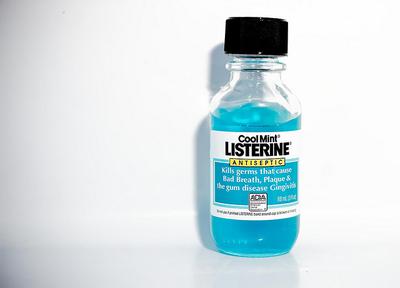
A similar tip to the one above about soaking in hydrogen peroxide is to soak your brush in a bit of mouthwash.
In fact, a reader, Lisa said to clean hers that she tips "a bit of mouthwash over the toothbrush after each use and an overnight soak in an inch of mouthwash once a week."
This is, in fact, something that the American Dental Association suggests works. Specifically, the ADA says, "Soaking toothbrushes in an antibacterial mouthrinse after use has also been studied and may decrease the level of bacteria that grow on toothbrushes."
Photo courtesy of Vox Efx
Cleaning Your Toothbrush In Dishwasher: Controversial But Some Swear By It
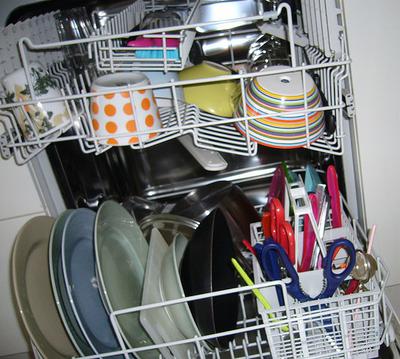
The final method for cleaning these objects in your home that several readers have sworn by is washing them in your dishwasher.
The reason I say this is rather controversial is because when I did a bit of research I learned that the American Dental Association doesn't actually recommend this. In fact, this is what they said:
Some toothbrush cleaning methods, including use of a dishwasher or microwave oven, could damage the brush. Manufacturers may not have designed their products to withstand these conditions. The cleaning effectiveness of the brush might be decreased if it is damaged.You can read the entire article from the ADA here.
Nonetheless, there are people who do it regularly this way, and have reported no bad results.
For example, a reader, Amie said: "When my children were younger, all of us seemed to trade strep throat back and forth. I started to wonder about the toothbrushes and shared tooth paste. Now we all have our own toothpaste and several toothbrushes. Once you brush your teeth, bring the toothbrush to the dishwasher. I wash them daily in the dishwasher! No more strep throat in our house!"
In addition, another reader, Mariah said: "We wash toothbrushes in the dishwasher, too! And if anyone is sick enough to need antibiotics, we all get new toothbrushes AFTER about three days on the meds."
So, I'm just throwing this method out there for you to consider, but I'm not necessarily recommending it!
Don't Throw Out Old Toothbrushes: You Can Reuse Them For Other Purposes
Of course, even after it is no longer suitable for brushing teeth you can use an old toothbrush to help scrub and clean up areas of your home! (What a great way to reduce, reuse and recycle!)In fact, I've gathered lots of uses for toothbrushes around your home here that can give you ideas of how to use this common product even after its use for tooth brushing is done!

In addition, does anyone else have tips for cleaning this common product in almost every bathroom? If so, make sure to share your ideas with me and I'll add them to the page.
Dishwasher photo courtesy of plindberg
Related Pages You May Enjoy
Cleaning Tips & Tricks For Busy MomsUses For Toothpaste For Cleaning & More
Go From How To Clean Toothbrush To Home Page
There are affiliate links on this page, and if you purchase a product through them I receive a small commission. Purchasing through my links costs you nothing extra, but helps support the free information provided on this site and my family. To learn more please see my product review disclosure statement.
Comments for Cleaning Your Toothbrush In Dishwasher: Controversial But Some Swear By It
|
||
|
||
|
||
|
||
|
||
|
||
|
||
|
||
|
||
|
||
|
||
|
||
|
||
|
||
|
||
|
||
|
||
|
||
|
||
|
||
|
||
|
||
|
||
|
||
|
||
|
||
|
||
|
||
|
||
|
||
Thanks For Visiting My Website: Grab Your Free Gift!

Hi, I'm Taylor, a busy mom with 3 kids, so I have lots of hands on experience with house cleaning, laundry and my fair share of spots, spills and other messy catastrophes. Thanks for visiting my site.
I update the website all the time with tips, tutorials, cleaning recipes, reviews of products from readers like you, and tests I've done on various cleaners, removers and laundry supplies.
I'd love to give you a gift! When you subscribe to my free weekly newsletter you will receive a free printable laundry stain removal chart that you can reference as needed.
I hope you enjoy this gift, and stop by again soon!
CAUTION: This website is provided for informational purposes only. It is provided as is, without warranties or guarantees. Some stains and messes just won't come out, and are permanent. Further, some cleaning methods can harm your item, so if what you want to clean or launder is sentimental or expensive call a professional. See disclaimer of liability for more information.
Let's Stay Connected!
Get Free Email Updates
(and get a FREE printable)
Related Pages
 Visit Household Management 101
Visit Household Management 101
 Visit Home Storage Solutions 101
Visit Home Storage Solutions 101
